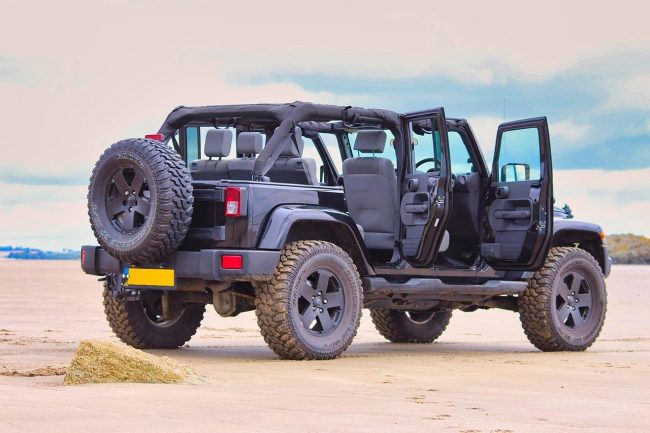
You’ve bought a new Jeep, all your friends are jealous, and you’re happy, but now you want to lift the vehicle. It’s natural to feel nervous because you don’t want to damage your new toy. If you have questions, you should find the answers in this guide.
Why Lift Your Jeep?
Some people will be reading this wondering why they would even want to lift their new Jeep. If you fall into this category, know that there are two main reasons. On the one hand, you’ll find Jeep owners who like the appearance of a lifted Jeep. They do it for aesthetics and love how it looks after lifting.
On the other hand, some people want to fit larger 4×4 tyres and benefit from off-road performance. While standard Jeeps are designed in part for off-road travel, lifting makes the vehicle even stronger off-road and prevents damage for those planning to travel across bumpy terrain.
With more height, the vehicle has more room for the suspension to work, and it also lifts the whole vehicle away from the lumps, bumps, and obstacles that come its way. Whether you want to lift your Jeep for appearance or performance (or both!), you’ll find everything you need to know in this guide.
Lifting Your Jeep
First and foremost, it’s best to contact a professional service if you aren’t confident and don’t have experience in this area. When done incorrectly, you could damage your rig and unintentionally alter the steering geometry or suspension. Be warned that this process could take many hours as you continually tweak the rig.
The bigger the lift, the more considerations too. For example, those lifting above 3.5 inches need to keep in mind the longer shocks and lower control arms. Go even further, and you may need to play with longer upper control arms, front brake lines, rear brake lines, and track bar.
Choose a Jeep Lift Kit
Before anything else, you’ll need to choose between the many lift kits. For instance, most standard kits will lift the vehicle anywhere between 1 inch and 3 inches. If you’re on a budget, you may find more affordable kits going below 1 inch. Potential kit types include coil spring lift kit, short arm lift kit, and long arm lift kit. Research the many pros and cons of each solution and find the best one for your new Jeep.
Making the Change
Please note that the process could differ slightly depending on the age and style of your Jeep. This being said, here is a basic guide to follow:
- Start by removing the front lower shock bolts, the brake line hardware, and any potential harnesses.
- Remove the track bar bolts as well as the sway bar end links.
- Remove the coil springs by lowering the axle – you need to be careful that nothing gets stuck or damaged during this stage.
- Use a pry bar to take off the factory spring spacers – again, be careful because too much pressure will cause unwanted damage.
- Insert the new coil spring spacers and put the front suspension back in.
- Repeat the process for the rear but remember that you’ll need to remove the transfer case breather (many have been caught out by this process).
- Put the parking brake lines back in.
If you’ve bought a new Jeep and aren’t sure if it has been lifted already, measure the springs because this is normally the most obvious change. Look at the stock spring measurement and compare it to yours.
If you aren’t confident, contact a specialist service, and they’ll make the change on your behalf!
